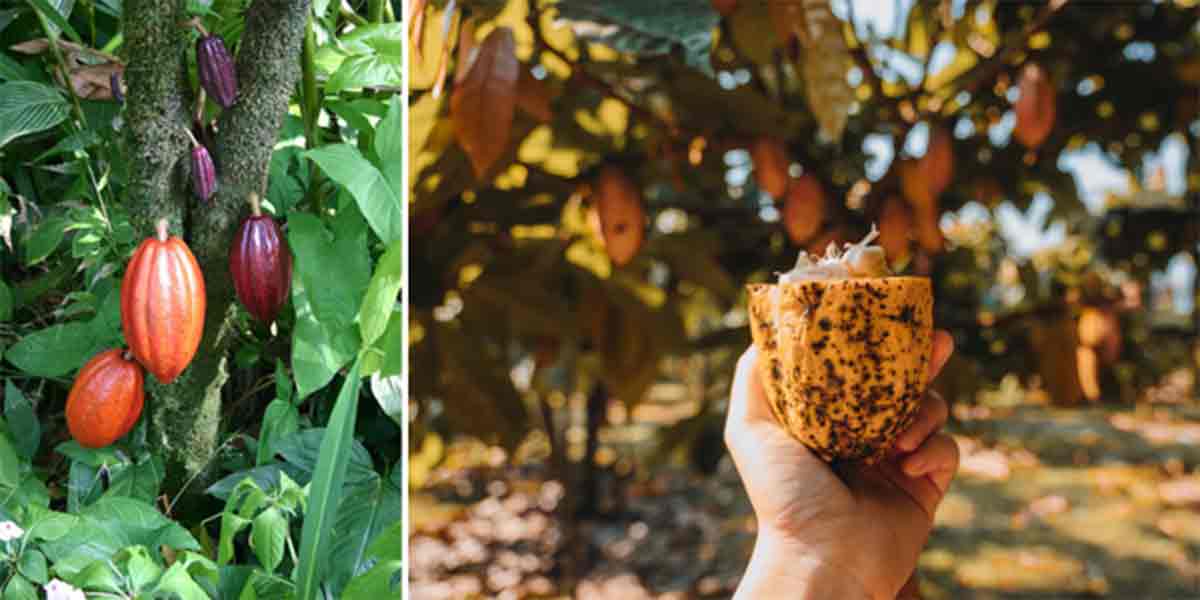Scientists Map the Genetic Evolution of Cacao to Chocolate
Researchers have mapped the ancient dispersal of the cacao or cocoa plant from South America to Central America. Not only did they discover the plant was a central commodity in ancient trading, but it was also cross bred to form new genetics.
The Theobroma cacao plant produces a powerful natural substance that is used today as a food, and medically to protect nerves from injury and inflammation. It’s also associated with protecting the skin from oxidative damage and UV radiation, and many claim it has beneficial effects on “satiety, cognitive function, and mood”.
Native to the Amazon basin, cacao thrives in the foothills of the Andes mountains in the Colombian and Venezuelan Orinoco basins. It is known that 4,000 years ago, the plant was used by cultures in the Yucatán and Honduras, and that it was first domesticated by the Mokaya and Olmec peoples of Central America and Mexico.
The Olmecs are credited for having passed their knowledge of cacao to Central America Mayans, who then prepared ceremonial drinks which were consumed by shamans. However, how the plant got to these northern regions has always been as mysterious as the magical chemistry found within its fruit and seed. Until now, that is.
- Chocolate Trail: Sacred Maya Cacao Groves Found In Mexico’s Yucatan
- The Ancient History of Chocolate, Gift of the Gods

A Maya lord forbids an individual from touching a container of chocolate. (Public Domain)
Mapping the Genetic Evolution of Cocoa
A team of archaeologists has now tracked the origins and dispersion of the cacao tree. Dr. Claire Lanaud and her colleagues studied the residues collected from 352 ceramic pots dating between 5,900 to 400 years ago, found in Ecuador, Colombia, Peru, Mexico, Belize and Panama. They said it was known that Theobroma cacao originated in the Neotropics from South America, but until this study little was known about its domestication and use in these regions.
The new research, published in Scientific Reports, suggests the tree was “carried via human migration and trading routes,” from the Amazon to northern regions at least 5,000 years ago. They also found the trading of cocoa plants “contributed to the evolution of domesticated plants”.
- Failed Crops Caused Economic Crash for Mayan Chocolate Currency
- What the ancient Mayans can teach us about health and healing

Geographical localizations of genetic groups and human pre-Columbian cultures associated to the archaeological items analyzed. The eleven genetic groups of the T. cacao species, as previously reported4, are indicated at the right top of the figure and their native areas localized in the map with the corresponding colors. (Lanaud, C et al/Nature)
Cross-Breeding the Magic Bean
The team of scientists identified three strains of cacao DNA, enabling them to discern which strains were bred and shared across distant cultures. The team of researchers concluded that the cacao bean “was more widely shared between different cultures than scientists thought”.
Until now, how the plant spread across various cultures was unknown, but the new study suggests cacao was domesticated “in the Amazon 5,000 years ago,” and that it spread rapidly along the Pacific Coast of South America. There are 11 known strains of the plant and the research team found "high levels of diversity among the ancient strains," suggesting different populations of the plant were bred together.
The scientists write that “strong genetic mixing” between geographically distant cacao populations occurred as early as the middle Holocene in South America approximately 4,000 to 6,000 years ago. They now suspect this was encouraged by humans “favouring the adaptation of T. cacao to new environments”.
European Cocoa Alchemy
It is uncertain when exactly cacao arrived in Europe for the first time, where the name was soon morphed to ‘cocoa’, but “Cacao Now” say most historians agree that it appeared in the Spanish royal court in the late 1500 AD. Soon after, France and Italy also began exploring Central America and importing cacao, and it wasn’t long before “cacao mania” spread across Europe.
With the climate in Europe being too cold to cultivate the plant, cacao plantations were established across Africa, which today is the largest supplier of the global cocoa trade. Famously, in 1828, Dutch food manufacturers began treating cocoa beans with alkaline salts to form a paste that was mixed in water, resulting in Dutch cocoa.
It was a decade later that C.J. van Houten patented a process for pressing the fat, or cocoa butter, from roasted and ground cocoa beans, which produced the first cocoa powder.
Then, in 1847, the English company Fry and Sons mixed cocoa butter with chocolate liquor and sugar to produce the very first chocolate bar. And still being a little bitter to many European pallets, dried milk powder was added to this bar in 1876 creating milk chocolate as we know it today.
Top image: Left; A cacao tree with fruit pods in various stages of ripening. Right; Ripe cacao ready to pick. Source: Left, Public Domain, Right, Pantira/Adobe Stock
By Ashley Cowie

















